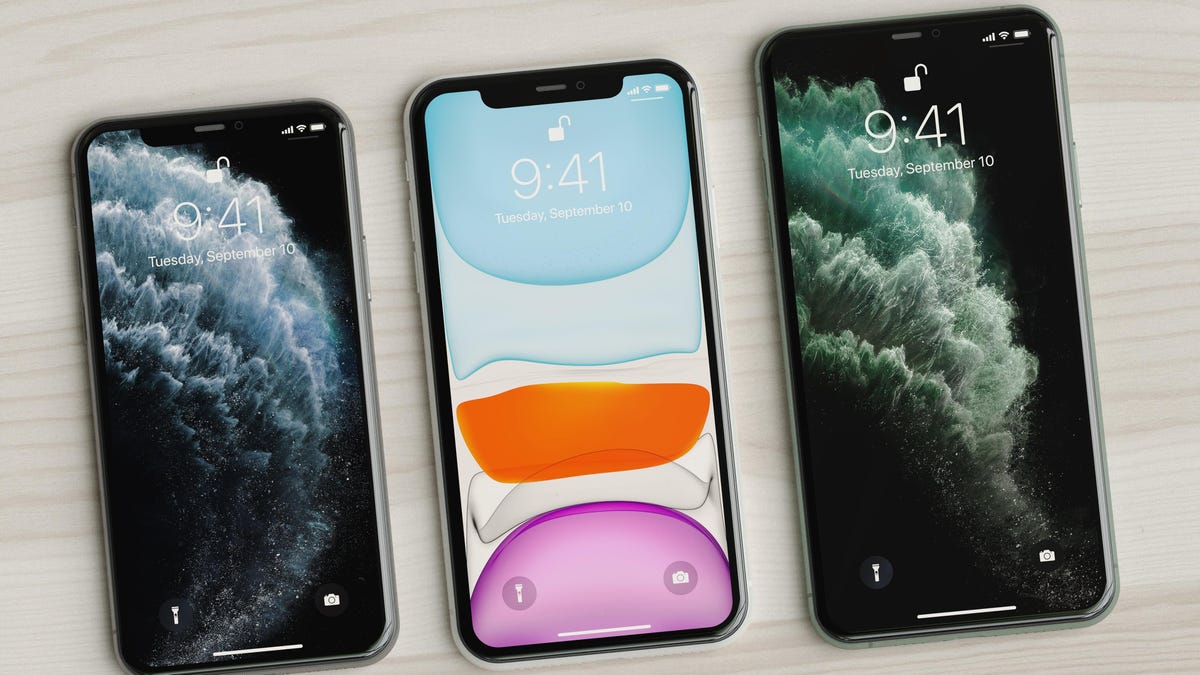
The benefits of OLED on an iPhone
Here’s an example of why that’s great: Let’s say you’re watching a movie on your phone. Anytime there are dark scenes in that movie, those areas of your display will quite literally turn off. A night sky goes completely black; if the movie is widescreen or a square 4:3, the bars that appear top and bottom or left and right are suddenly completely dark. It results in a very good-looking image, especially if you’re watching in a low-lit room.
Advertisement
These benefits are why I love OLED TVs in particular. The image is fantastic, and, when watching in a totally dark room, letterboxing bars just disappear; you only see the part of the screen you should (whether it be super widescreen or the old square format).
When it comes to iPhones, if you compare an LCD iPhone and an OLED iPhone and fill each display with a black rectangle, it would perfectly visualize the difference. The OLED iPhone would look like it was turned off; the LCD iPhone would still appear dark, but the display would be illuminated.
Advertisement
Because OLED pixels can turn themselves off, there are huge implications for battery life. You can save your iPhone some juice just by using dark mode, specifically the kind of dark mode that uses black backgrounds. (Grey ones won’t turn the pixels off, so you really need all-black elements to save your iPhone’s battery from having to power each and every pixel.)
What are the disadvantages of OLED?
Traditionally, the main flaw with OLED displays is burn-in. You see this a lot with OLED TVs, unfortunately; after an extended period of use, sometimes the “shadow” of static images will always remain on your screen. People who watch a lot of news, for example, complain that they can see the outline of the chyron, news ticker, and outlet logo on their TVs at all times.
Advertisement
That said, Apple has done a good job to prevent burn-in on OLED iPhones and it just isn’t a common complaint with these devices. The first OLED iPhone—the X—has been out since 2017, and in those four years, residual images haven’t been a noted issue. That’s to say, you don’t need to go out of your way to choose an LCD iPhone if you’re afraid of burn-in.
What kind of display does your iPhone have?
Below, I’ve listed each and every iPhone that Apple has ever made, complete with their display type. Some of these iPhones are quite old, but I’d love to know if you’re still rocking them. I should note that there are no new LCD iPhones; the last one Apple produced was the 2020 iPhone SE, and the iPhone 11 before that. The entire iPhone 12 and 13 lineups are made using OLED displays.
Advertisement
iPhones with LCD
iPhone (2007), iPhone 3G, iPhone 3GS, iPhone 4, iPhone 4S, iPhone 5, iPhone 5C, iPhone 6, iPhone 6 Plus, iPhone 6S, iPhone 6S Plus, iPhone SE (1st Gen), iPhone 7, iPhone 7 Plus, iPhone 8, iPhone 8 Plus, iPhone XR, iPhone 11, iPhone SE (2nd Gen).
Advertisement
iPhone with OLED
iPhone X, iPhone XS, iPhone XS Max, iPhone 11 Pro, iPhone 11 Pro Max, iPhone 12, iPhone 12 mini, iPhone 12 Pro, iPhone 12 Pro Max, iPhone 13, iPhone 13 mini, iPhone 13 Pro, iPhone 13 Pro Max.
Advertisement

Comentarios recientes